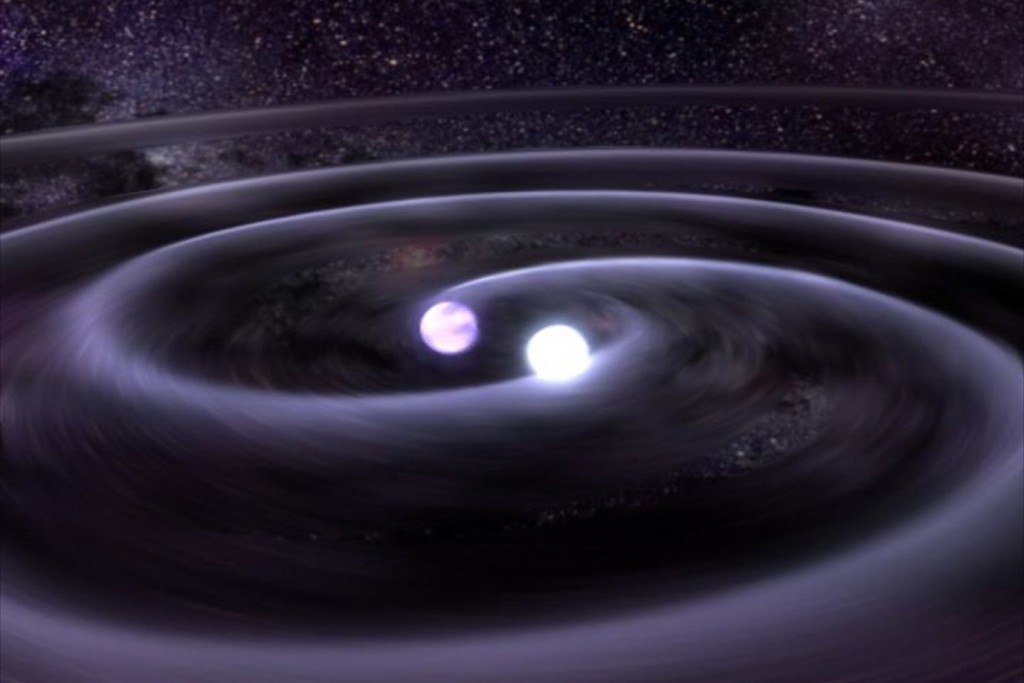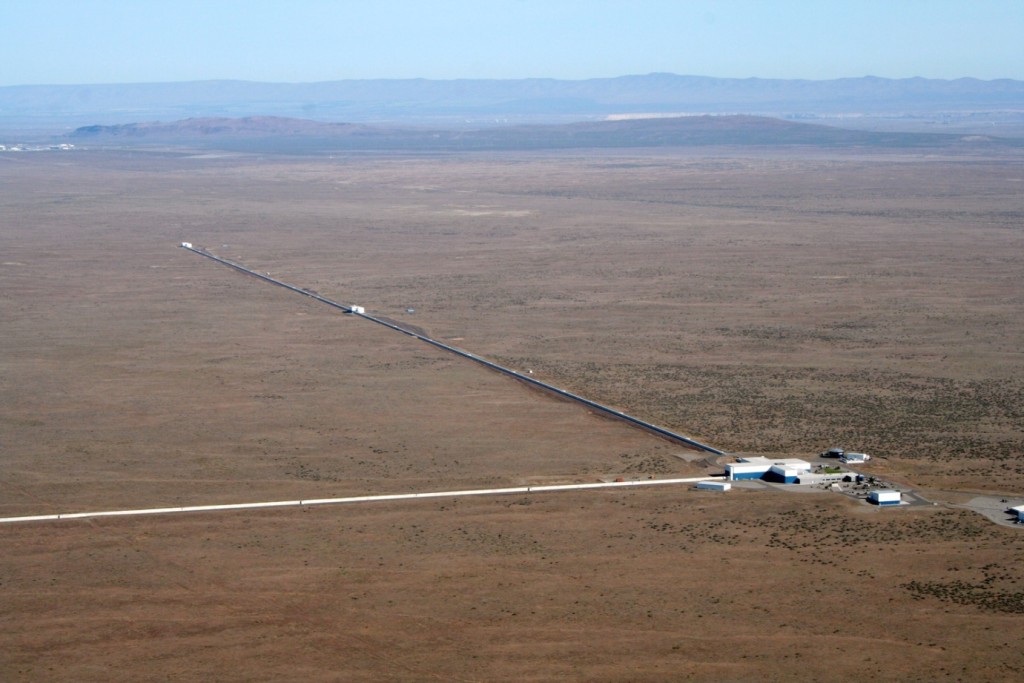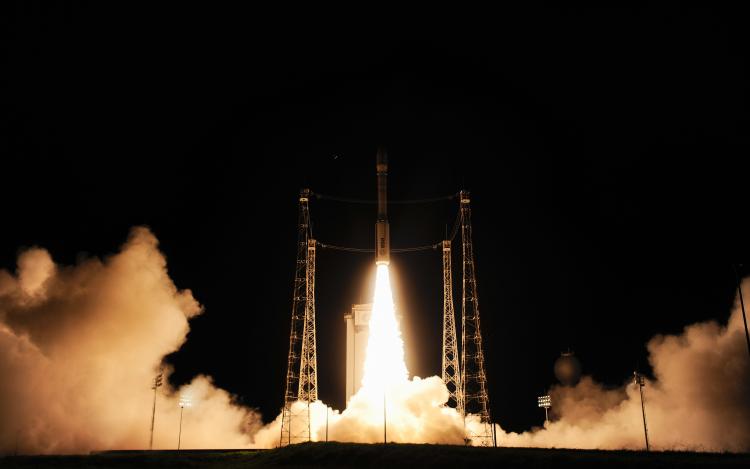On 11 February 2016 scientists at the Laser Interferometer Gravitational Wave Observatory (LIGO) sent shock-waves through the scientific world with the announcement that they had detected faint ripples in the fabric of space and time, known as gravitational waves. This long-awaited discovery will give astronomers a new way to study some of the most violent events in the universe and peer back further towards the beginning of time than ever before.

Gravitational waves were first predicted using Einstein’s theory of space, time and gravity; the general theory of relativity, but until today their existence had only been inferred indirectly. According to general relativity, gravitational waves are created whenever a massive body is accelerated, but the effect is so weak that to have any chance of detecting them they have to come from extremely violent events like when two black holes collide.
These cataclysmic collisions cause ripples in space and time that radiate out through the universe at the speed of light, like ripples from a stone thrown into a pond. As a gravitational wave from a collision in a distant galaxy passes by the Earth it causes space to expand and contract, but at these huge distances the effects are tiny, thousands of times smaller than an atomic nucleus.
To measure these fantastically minute shifts LIGO uses two vast L-shaped observatories, one in Washington State and the other in Louisiana. Each observatory sends laser beams down two 4 km long arms at right angles to each other, which bounce off mirrors at each end and are then recombined close to the source. If a gravitational wave passes by then the arms will change length by different amounts, causing a tiny difference between the arrival times of the two laser beams’ peaks and troughs, producing what is known as an interference pattern.

LIGO first began hunting gravitational waves in 2002, but until now had come up empty handed. After an upgrade that made the observatories ten times more sensitive than previously, LIGO began its fifth phase of operation in September last year. Since then, rumours had been circulating on the internet that the LIGO team had made the first direct detection, and today (11 February 2016) those rumours were confirmed.
In the early hours of 14 September 2015, almost immediately after the upgraded LIGO had been switched on, both the Washington and Louisiana observatories detected a gravitational wave. Based on calculations made using Einstein’s general theory of relativity, LIGO scientists believe that this wave was produced in the last moments of a collision between two black holes, each around 30 times more massive than the Sun. As the black holes spiralled closer and closer to each other they sent gravitational waves rippling out through the universe. In the last instant of the merger the collision converted the mass of three Suns into gravitational waves, briefly producing more power than the entire visible universe.
The discovery does more than just confirm a prediction of Einstein’s theory, it also gives astronomers a brand new way to study the cosmos. Most of what we know about the universe at large comes from observing electromagnetic waves, from radio waves at the low energy end of the spectrum, to visible light, to high energy gamma rays.
Just as light from distant stars carries information about that star, so gravitational waves carry information of the events that created them. Gravitational waves will allow astronomers to study violent astrophysical events like collisions between black holes or neutron stars, supernovae and objects that are otherwise invisible using electromagnetic radiation. It may even one day be possible to use gravitational waves to peer back to the very beginning of the universe, to the moments shortly after the Big Bang, which is impossible using electromagnetic radiation.
An ambitious joint project between the European Space Agency and NASA aims to put a giant gravitational wave observatory in space to do just that. Known as eLISA, the observatory would have twin arms 1 million kilometres in length, making LIGO look like a child’s toy.

Although eLISA itself is a long way off, with an earliest launch date of around 2030, on 3 December 2015 a mission designed to test the essential technology required for ELISA, known as LISA Pathfinder, blasted off from ESA launch site in French Guiana. If successful, the mission will pave the way for a space based gravitational wave observatory that could truly open a new window on the universe.
One comment on “First ever gravitational waves detected”
Comments are closed.
1)- How is it that gravitational waves travel at the same speed as light ? Do they have anything else in common. Are they essentially the same thing ?
2)- It seems inconceivable that the collision between two such massive objects would be over with so quickly – one short chirp